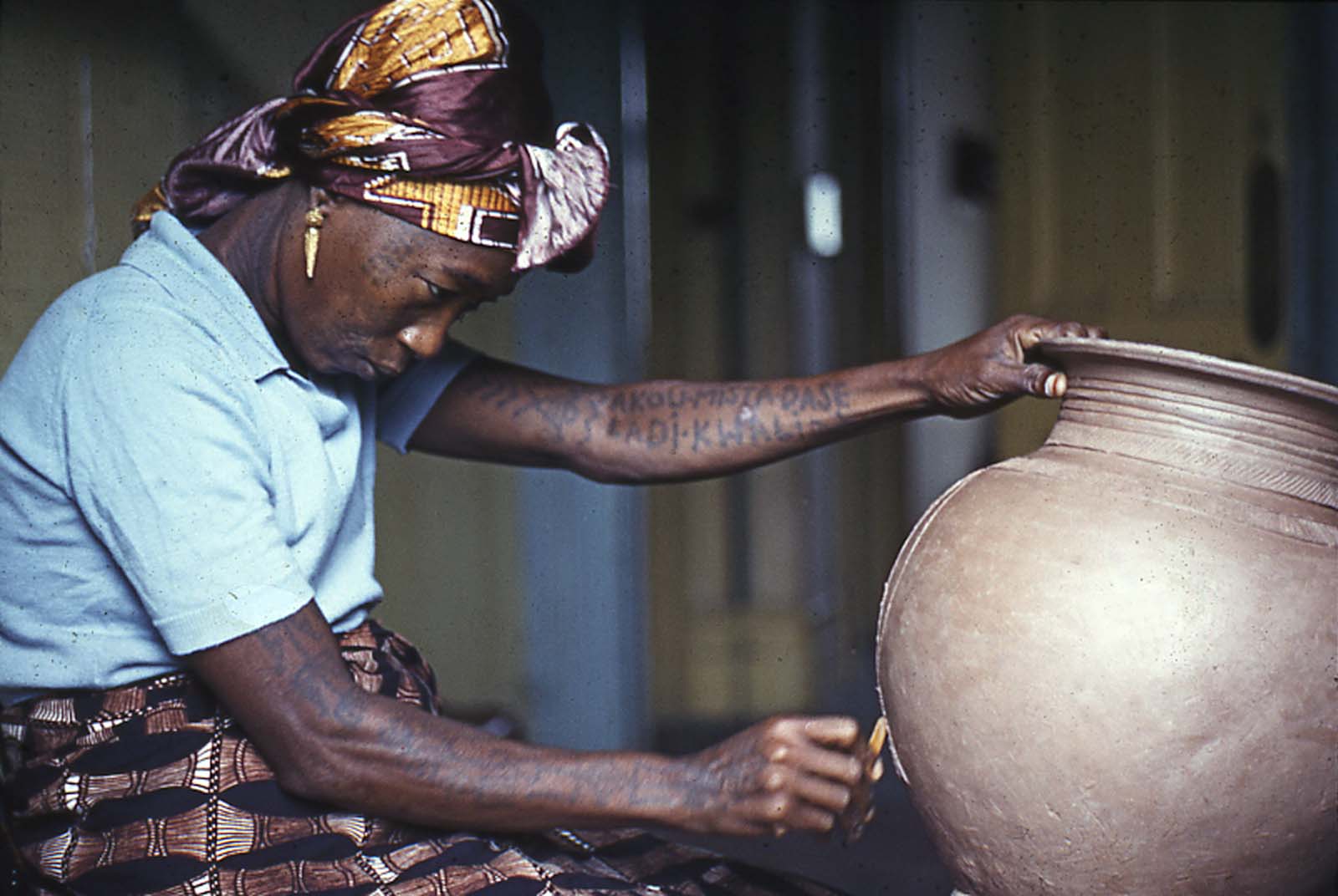


“When I was a teenager in Nigeria, the famous potter Ladi Kwali was often mentioned, but I knew little of her. It was when I moved to England that I became fascinated with her” remembers Jareh Das, the curator of the exhibition Body Vessel Clay at Two Temple Place.
The exhibition brings together three generations of black women makers reflecting on clay as a medium - Ladi Kwali (1925 – 1984), Magdalene Odundo (1950) and contemporary practitioners born in the 1980s and 1990s based in the UK. This grouping helps to reflect on the dialogue between techniques and experimentations, and more generally a dissolution of art and craft. More broadly it reflects on cultural identity, legacies of colonialism and the racial disparity that exists within traditional British craft.
Ladi Kwali is a Nigerian artist who was discovered by the British potter Michael Cardew (1901-1983), who was asked by the British Colonial Government to set up the Abuja Training Center. Kwali learned to make pots from her aunt, combining the skills of throwing, kiln firing at low outdoor temperatures and slap with coiling techniques from her native Gwari region. Photographs and journals document the training centre and how Ladi Kwali’s work went on promotional exhibition across the UK and US, catching the attention of the Western world. Works by other Nigerian potters such as Danlami Aliyu (1952-2012), Halima Audu, Bawa Ushafa are also shown alongside Kwali’s pots, describing other makers that came out of the Abuja Training Center. It creates a context in which to inscribe these works that are held in important regional collections.
Kwali’s distinct technique was picked up by Magdalene Odundo who arrived in the UK from Kenya in the 1970s to study in Cambridge. “When I build my work I concentrate on the interior of the pot, with a visual awareness that the exterior takes its form from the internal template. This idea of inside and outside is very similar to how we see ourselves as people.” Odundo’s large pots become more and more anthropomorphous as the work develops.
These two women achieved tradition and innovation: British studio pottery and matrilineal traditions creating a completely new way of making pots. Upstairs, the work of younger women explores how they are finding their voice within this way of making. Symbolically holding Ladi Kwali and Magdalene Odundo as their creative ‘mothers’ uniting identity, history and contemporaneity.
The two-legged terracotta ceramics are by Bisila Noha (b.1988), a Spanish Equatorial Guinean artist who explores the symbolism of duality, male and female, West and non-western. Her pots are simultaneously thrown and hand built, reclaiming equality in a domain that is strictly male dominated. Noha deliberately responds to the legacy of Ladi Kwali, who effortlessly combined her own Nigerian Gwari tradition with British studio pottery, while also retracing the legacy of Kouame Kakaha (b.1960) a sculptor from the Ivory Coast; bringing in lesser-known traditions from the Global South.
The following and final room focuses on the performativity of clay. Chinasa Vivian Ezugha (b.1991) explores the symbolics of clay through photographs of her durational performance, Uro, also referenced through a conceptual sculpture made of clay. Jade Montserrat’s (b.1981) video introduces the personal within the collective experience. Filmed in North Yorkshire where the artist grew up, it explores the relationship between the body and the earth, embedding physically and visually the metaphor of the vessel with its interior (the womb) and exterior (the skin). The artist is naked and is covering her body with clay, reclaiming this material in a visceral way.
The ritualistic aspect of this film connects with other pots on display. Shawanda Corbett’s colourful elongated vessels are exhibited deliberately low, creating a suggestive atmosphere for these objects and transforming them into containers of spirits of ancestors, appeasing the living. Phoebe Collings-James armour hangs from the ceiling, an effigy to our bodies.
Ultimately, although all different, the works exhibited stand as a powerful insight into the manifold possibilities of clay and its emotional qualities. The title of the show emphasises how the vessel is both something that can contain identity and memory while being a shelter. This duality foregrounds the exhibition within a dimension of care that should be extended to all spheres of our lives, the personal, the collective and the political.
Ilaria Puri Purini
Curator of Programmes
Two Temple Place, Temple, London WC2R 3BD. Monday, 10am-4.30pm; Tuesday closed; Wednesday, 10am-9pm; and Thursday - Sunday, 10am-4.30pm. Exhibition open until Sunday 24 April. www.twotempleplace.org